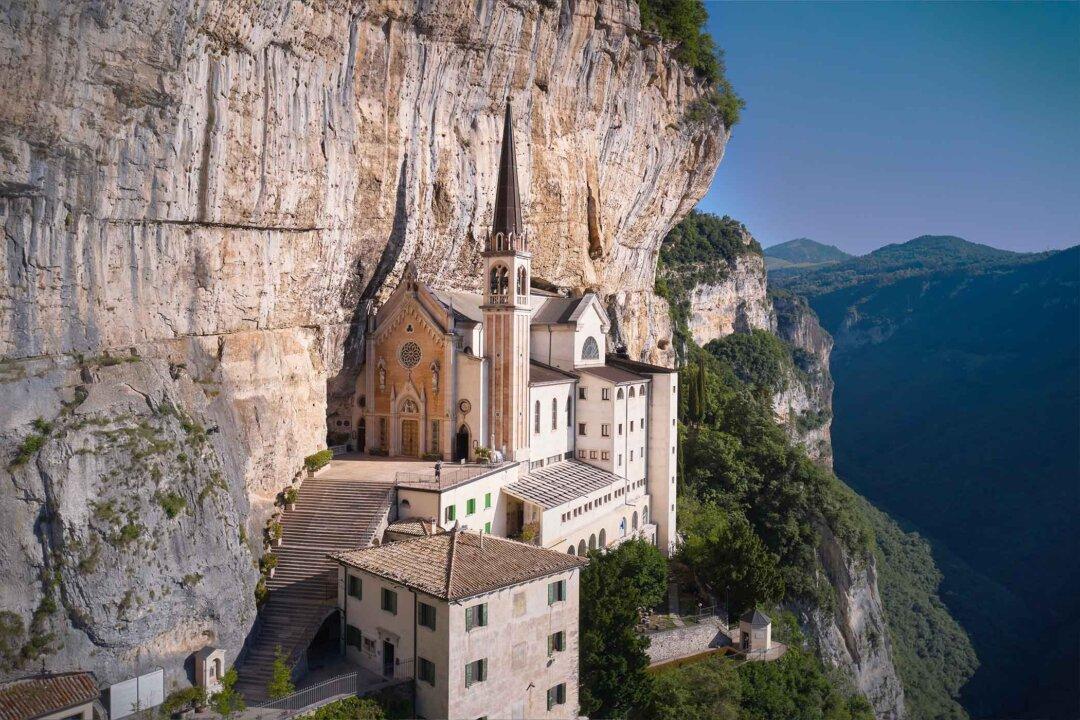One thousand or so years ago, reclusive monastics once hid themselves away from the secular world by traversing a thin shelf of rocky cliffside at Mount Baldo masiff, north of Verona, in today’s Italy. Here, crowned by steep cliffs to the north, west, and south, and adjacent valley side to the east, a hermitage hanging on the side of a cliff afforded them a spiritual place for tranquil reflection.
Today, the hermitage no longer stands. In its place, as if floating midway between Heaven and Earth, the glorious gothic façade and tower of a minor basilica seem to defy the very laws of gravity. Nested on a narrow perch, the Sanctuary of Madonna della Corona emerges half-hewn from the living rock.






